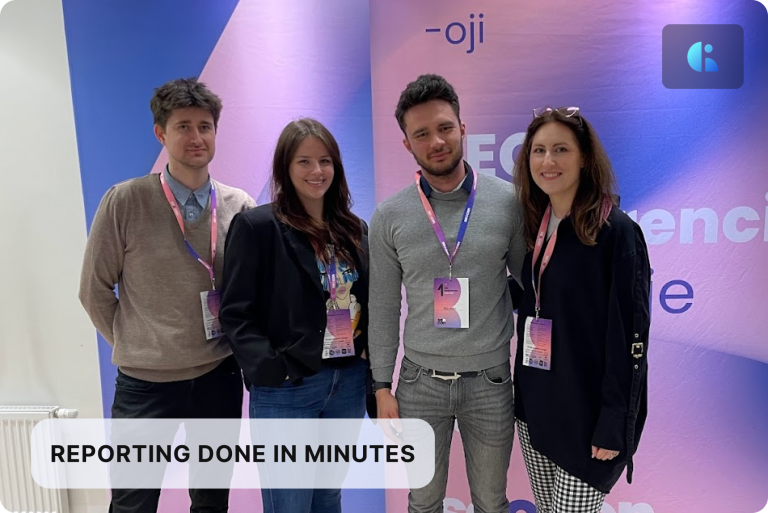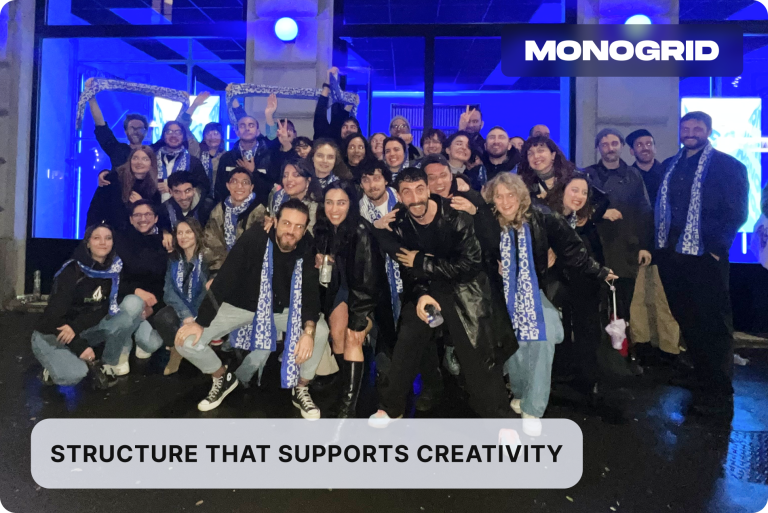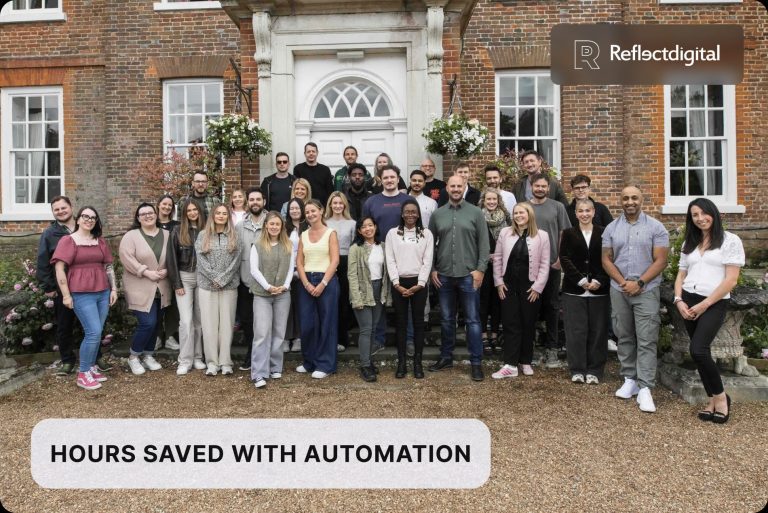Using Productive, DotDev Has Grown 50% YoY For the Past Three Years

DotDev is a product development company with three core values: creating long-lasting relationships, reliability, and excellence in everything they do. Following these values has gained them a reputation as Australia’s leading omni-channel integration partner across platforms such as Apparel21, Retail Express, and SAP. After 24 months that DotDev has been using Productive, we chatted with Co-founder and Technical Director, Brendon Nicholas to see how their business has transformed.
You specialize in e-commerce, right? Do you have more diverse clients now after the crisis started? What does your company look like now, in 2020?
We’re a team of around 34 now. Probably 60-70% of our work is related to fashion brands, the rest is product development and larger retailers. Now there are a lot of startup-based things, like home delivery. A lot of brands are going from large, retailer models to online models. There have been a few bigger changes since we started using Productive. The biggest change from the project management side was when we got to a team of 20. We broke down into three separate teams and brought a Tech and a Delivery Lead in.
Which industries do you serve?
Our customer base has changed from the quantity of projects, we’re definitely not doing as many at a time. We moved to a lot larger budgets and a lot longer projects, and they’re a bit more technical and custom, rather than smaller, higher-volume stuff we were doing before. I’d say we manage around 7-8 larger projects at one time. Support work has definitely increased—that’s probably 40-50% of our revenue now. So when we launch projects, they go into support and optimization.
Achieve Your Agency’s True Potential
Switch from multiple tools and spreadsheets to one scalable agency management system.
We Help Your Agency Reach New Heights
Switch from multiple tools and spreadsheets to one scalable agency management system.
You said that the sizes of your projects have increased. Does that bring more risk?
It definitely brings more risk. The more technical and larger you get, the more expectations there are. We’ve gone through 12 months of rapid growth and doing more technical things. The fact is, if you have big aspirations, planning is fundamental to ensure that growth happens. High aspirations also need reliable systems and efficient processes. This is crucial to ensuring that the level of quality remains constant as the business grows.
“If you have big aspirations, then planning is fundamental to ensure that growth happens. High aspirations also need reliable systems and efficient processes. This is crucial to ensuring that the level of quality remains constant as the business grows.”
What were your operations like before? Can you name the tools you tried before Productive? What were some pain points you were going through?
To be honest, we have tried many, many different tools. I think 20 or 30 at the time. Over the last 12 months, I don’t think I’ve looked at what’s going on with other systems. I’ve been pretty happy with the way Productive is working. We went right through from things like StreamTime and bespoke platforms like that, which kind of offer a similar approach, right through to enterprise platforms. We’re content with the pace you guys are moving.
We really struggled to find a system that not only provided all the features we required but was also fast and user-friendly enough that our team could do what’s required without having to read a 30-page manual. Even simple things like releasing checklists on tasks actually have a massive impact and provide us a lot of functionality to be able to manage end-to-end. It’s features like that that have allowed us to bring in our delivery plans from external tools into one platform.
“We really struggled to find a system that not only provided all the features we required but was also fast and user-friendly enough that our team could do what’s required without having to read a 30-page manual.”
So, would you say that Productive’s roadmap and development are actually following your needs as well?
Yeah, definitely. Having that relationship with you guys, being able to get responses quickly, and knowing that it gets heard is a big benefit for us. You’re not just another customer where you request things and it gets lost in the backlog. There have been many different things we’ve recommended over the years, and we’ve seen those get released in weeks, sometimes months after. For us, that makes us feel good as a customer.

You’ve clearly tried out a lot of different tools. So what was the learning curve like for you in Productive?
I think that’s probably one of the single biggest things why I eventually came across to it. Productive acts and behaves like an enterprise tool, but it doesn’t feel like it. When we looked at some other tools, we really needed to understand the terminology and go through their manuals and training documents to really get an idea of how to go through the end-to-end flow. The way we explain it is: It’s like Trello, it’s super simple, but it has a whole lot more. It’s got multiple boards and it does end-to-end, not just the boards part.
How about your delivery team? Because they’re mostly involved with Productive, was it hard for them to learn how to use Productive—and use it in the best possible way?
I think it was pretty seamless, to be honest. Always, the first time onboarding, when we get a new delivery team, it’s a couple of hours of onboarding. We take them through so they can get familiar with the task. I think it’s got a UX they’re familiar with.
Do you have difficulty with getting people to track time? It’s important for your utilization to keep things up to date in real-time. Has that ever been a challenge for you?
We have a Delivery Lead that manages the resourcing, time approvals, and task updates—that’s definitely improved things a lot. The team understands the importance of tracking. We have a generic, company-wide delivery board, where every moment they understand what they’re doing today, what they’re going to achieve. We update it at the end of the day, going through what we completed and any issues or blockers for the next day. The only real process change we recently had to make was getting everyone to write their daily tasks, to map out what they’re doing and what they’ve done at the end of each day.

How about we touch back on the lockdown situation. In the beginning, everyone was wondering “Are we going to be able to survive this?” Have profitability reports in Productive additionally eased up the anxiety for you?
For me, it was an easy move, because I knew I had the visibility. I know I can jump in anytime and get an understanding of budgets, time, what people are doing, or what’s going on within the business. I’ve spoken to another couple of directors of agencies in Australia and some of them have really struggled to make the shift. They’re using really large, enterprise, ancient tools that just don’t have the real-time capability. The financial reporting that we can get in a couple of clicks—they’re having to get their accountants to go in and drill that data in Excel. Having that insight made it pretty easy. I’m out here in the countryside, pretty relaxed in the middle of this.
After using Productive for about a year and a half now, how has your role shifted, has it become easier? Are you focusing on more decision-making, strategic thinking? How has it changed?
My role was very heavy across the process and workflow of the business 12-18 months ago. Putting in tools like this has allowed me to implement those processes, get the team across it, then sit back and not really have to worry about things. I’m working with the team a little bit closer, upscaling, and playing a lead role across some of our solutions.
Were there things that you discovered in Productive that you didn’t expect you would benefit from at the beginning?
The benefit was finding one system that’s not overly complicated, that can do end-to-end. That was probably the single biggest thing—reducing the amount of tools, platforms, and systems, and using just one. The other benefits that came up, which were never really an area of focus, were the Reporting, the financial capabilities and understanding. Having a platform that considers everybody’s salaries, the operating expenses of the whole business, and feeding that into project budgets and looking at the internal time vs. client time, gives us a lot more real-time and accurate view of the profitability of actual, specific projects. So that was never a focus before, but it’s something I use more than anything right now.
You said profitability wasn’t really looked at before, it wasn’t the number one reason why you purchased Productive. Maybe it wasn’t as important at the time?
I guess I probably never thought I could find a tool that was end-to-end: from leads, through management, financials, insights and reporting. Having it all in one has allowed us to drop a couple of the other platforms we used.

Was this already an internal process in DotDev before—to analyze your profit margins, compare it against your rates, calculate average rates per client?
I probably take it for granted now, but no, not really (in the same sense). There was a lot of guessing before. We knew that there were hours spent and hours that were quoted, but that was about it. Definitely not down to a level of individual resources or how much time we spent on internal projects. That’s a key thing that we get out of the reports that really feeds into our utilization and resourcing. If we know we’re spending 30% of our time on internal projects, then we know we’ve got the capacity to take on more work.
“That’s a key thing that we get out of the reports that really feeds into our utilization and resourcing. If we know we’re doing 30% on the internal projects, then we know we’ve got the capacity to take on more work.”
Did you calculate utilization before? Did you use other tools?
Not really, to be honest. We definitely didn’t have the visibility to look at.
So, how did you plan hiring before?
A key thing for us around the Scheduling is to essentially place a hold on the projects that are coming in. Now, everyone is locked out for about 3-4 months. We also place a hold on all the deals and sales we have in the pipeline. Now, we can get visibility for over 3-6 months, other than just 4-8 weeks and having to guess. Before, hiring always seemed a lot more like a risk and unknown because you’re kind of guessing based on a gut feeling, which isn’t always the best when you’ve got a lot going on.
Has that eased up the chaos? Do you see more overall satisfaction from your employees?
Yeah, I think less chaotic is the feedback I get, especially when we’re trying to do a team of 20 all at once. They can see two months out what they’re going to be working on, to think or prepare. Maybe they’ve got a bit of upscaling to do, or some research they want to do based on the projects coming in. For them, that just brings on a little bit of anxiety. So, as much visibility and stability they can have, makes it all easier.
Do you have any growth numbers you can share that you think are maybe a product of the switch over to Productive, having everything more organized, all in one place?
A standard QA/UAT phase was taking us around 120-180 hours. We’ve been able to launch a really big enterprise site on the same level, and that went through a testing phase of 60-70 hours. Obviously, there’s a lot of different factors that go into that, like technology and processes, but having all that centralized has made managing those phases remarkably quicker. I think it’s the context of jumping between different tools, then jumping back to Productive where you’re managing the support—that would waste a lot of time.
Any other measurable impact that you can share?
I think you can directly relate that we’ve grown 50% YoY for the last three years. I don’t think we would have got past 12 employees if we didn’t have Productive. The ability to scale and not have to change processes because it supports any scale or size that we need.
Do you use Productive end-to-end, from pre-sales to invoicing and billing? Do you have a standardized process that you use as a template?
Being a technical company, we kind of went back and forth, toying with the idea of bringing our delivery plans out of Productive. Around 3-4 months ago, we brought everything back from Gitlab into Productive. We’re trying to manage everything end-to-end there. From the initial scoping and delivery boards, we’ve broken down tasks and estimates and everything that the developers are doing, to the QA and testing phases, where the clients are logging issues. Having everything in one place was enough benefit for us to move back to Productive. It’s simpler for clients to understand, they only have access to one thing. From the team’s point of view, they know that they need to come in and look at what they’re doing. Everything that they’re involved in is in Productive, rather than being fragmented out into different systems.
Is there any project you’re especially proud of that you’d like share?
For us, the biggest shift over the last 12 months has been moving to headless e-commerce. It’s a big shift in the way we approach things, how flexible we are, and what we can provide our clients. We launched one for the AFL store, which is quite a large retail chain here.
Do you have a favorite feature that you think is the coolest part of Productive?
Over the last six months, I’d say project checklists! I know it seems so simple, but it’s allowed us to bring delivery boards and testing all into one tool. The ability to add filters, pivot the data, charts, have raw data…that saves a lot of time. Essentially, we don’t have to have numerous Google Sheets and exports. We have different data across the platform.
Achieve Your Agency’s True Potential
Switch from multiple tools and spreadsheets to one scalable agency management system.


